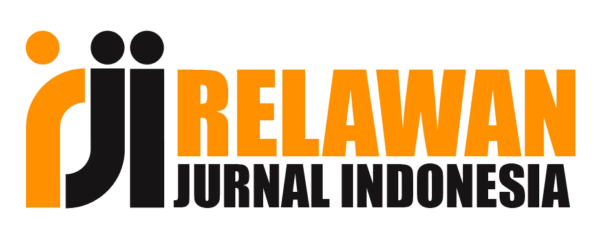Profil Hambatan Belajar Epistimologis Siswa Sekolah Menengah Atas pada Materi Gerak Lurus melalui Tes Kemampuan Responden
Abstract
Berdasarkan hasil pendahuluan yang dilakukan melalui angket pada materi gerak lurus dimana 94,4% siswa tidak dapat menggambarkan grafik pada persoalan GLB dan GLBB, 63,9% siswa tidak dapat membedakan antara kecepatan dan kelajuan, 36,1% siswa tidak dapat membedakan antara jarak dan perpindahan, 27,8% siswa tidak dapat membedakan antara GLB dan GLBB. Setelah melihat hasil pendahuluan yang dilakukan melalui angket masih terdapat hambatan siswa pada materi GLB dan GLBB. Maka tujuan dari penelitian ini untuk mengetahui hambatan belajar siswa pada pada materi gerak lurus. Penelitian ini dilakukan di salah satu sekolah menengah atas yang berada di kota Bandung dengan subjek dalam penelitian ini adalah siswa kelas X dengan sample 36 siswa. Metode penelitian yang digunakan adalah deskriptif kualitatif dimana metode ini dianalisis dengan menggunakan Tes Kemampuan Responden (TKR) berupa 5 butir soal uraian. Hasil penelitian melalui TKR bahwa siswa yang tidak memahami : Grafik GLBB dan GLB 100%, gerak vertikal kebawah 100%, mengidentifikasi gerak suatu benda 97,2%, menentukan jarak tempuh benda 94,4%, membedakan antara jarak dan perpindahan 89%, konsep GLBB 52,8%, gerak vertikal keatas 50%, konsep percepatan 44,4%, besar kelajuan 19,4%, dan besar perpindahan 5,5%. Berdasarkan hasil penelitian ini dapat dikatakan bahwa perlu adanya upaya untuk meminimalisir hambatan belajar siswa pada materi Gerak Lurus tersebut. Dimana peneliti akan menggunakan DDR (Didactical Design Research) untuk meminimalisir hambatan belajar siswa.
Kata Kunci : Hambatan belajar; Gerak lurus; Tes Kemampuan Responden
ABSTRACT
Based on preliminary results conducted through questionnaires on straight-motion material where 94.4% of students were unable to graph the GLB and GLBB problems, 63.9% of students could not distinguish between speed and speed, 36.1% of students could not distinguish between distance and displacement, 27.8% of students cannot distinguish between GLB and GLBB. After seeing the preliminary results conducted through the questionnaire there were still student barriers to GLB and GLBB material. So the purpose of this study is to find out the barriers to student learning in straight-motion material. This research was conducted in one of the high schools in the city of Bandung with the subjects in this study were students of class X with a sample of 36 students. The research method used was descriptive qualitative where this method was analyzed using the Respondent Ability Test (TKR) in the form of 5 items of description. The results of the study through TKR that students who did not understand: GLBB and GLB graphs 100%, vertical motion down 100%, identify the motion of an object 97.2%, determine the distance traveled by objects 94.4%, distinguish between distance and displacement 89%, concept GLBB is 52.8%, vertical motion is upwards of 50%, concept of acceleration is 44.4%, speed is 19.4%, and the displacement is 5.5%. Based on the results of this study it can be said that there needs to be an effort to minimize the barriers to student learning in the Straight Motion material. Where researchers will use DDR (Didactical Design Research) to minimize barriers to student learning.
Keywords: Learning Obstacle; Straight motion; Respondent Ability Test
Full Text:
PDF (Bahasa Indonesia)References
Brosseau, G.2002. Theory of Didactical Simulations in Mathematics. New York: Kluwer Academic Publisher
Marieta, Wina. 2016. Desain Didaktis Materi Gerak Lurus Berubah Beraturan Kelas X SMA Berdasarkan Hambatan Belajar Peserta Didik. Skripsi, Universitas Pendidikan Indonesia.
Suryadi, D. 2010. Metapedadidaktik dan didactical design research (DDR): sintesis hasil pemikiran berdasarkan lesson study. Teori, Paradigma, Prinsip, dan Pendekatan Pembelajaran MIPA dalam Konteks Indonesia. Bandung, FPMIPA UPI
Suryadi, dkk.2016.Monograf Didactical Design Research (DDR). Bandung:Rizqi Press
DOI: https://doi.org/10.17509/wapfi.v4i2.20203
Refbacks
- There are currently no refbacks.
Copyright (c) 2019 Febi Fitria Larasati, Heni Rusnayati

This work is licensed under a Creative Commons Attribution-ShareAlike 4.0 International License.
The Journal Wahana Pendidikan Fisika http://ejournal.upi.edu/index.php/WapFi/ is licensed under a Creative Commons Attribution-ShareAlike 4.0 International License
The Journal WaPFi (Wahana Pendidikan Fisika).
All rights reserverd. pISSN 2338-1027 eISSN 2685-4414
Copyright © Faculty of Mathematics and Science Education (FPMIPA) Universitas Pendidikan Indonesia (UPI)









